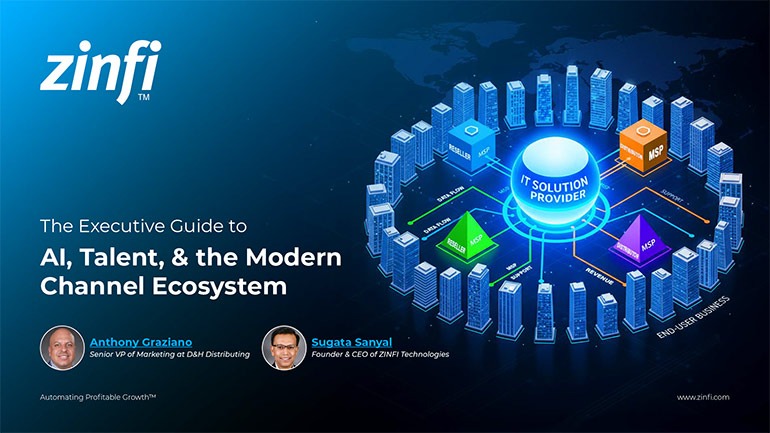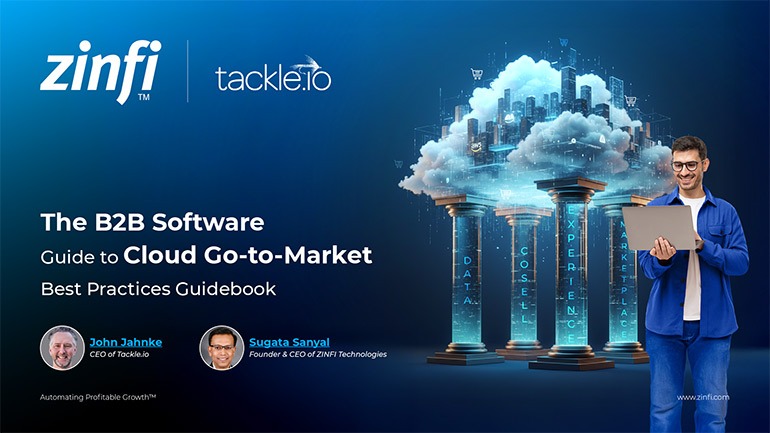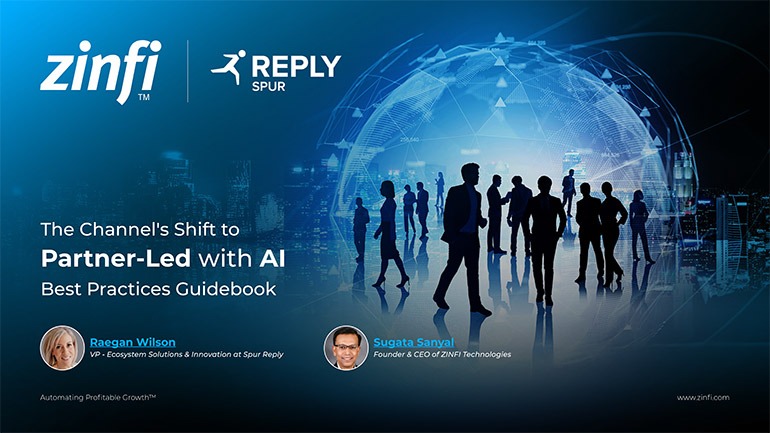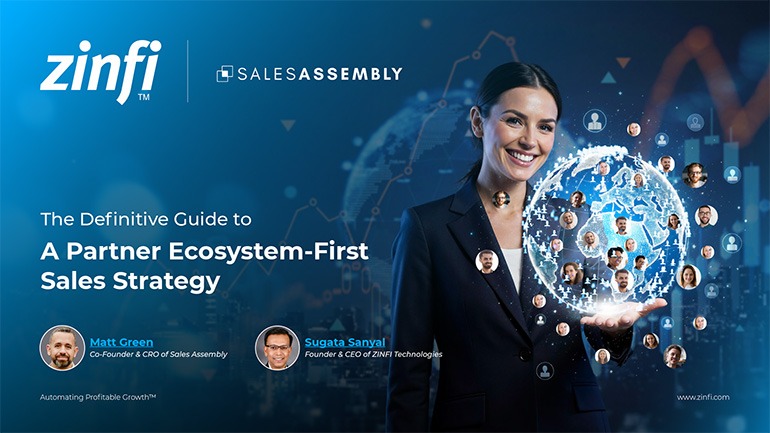Best Practices Articles

Why Most MDF Marketing Programs Fail
Market development funds (MDF) are a critical source of marketing activity. Most vendors selling through the channel want to leverage MDF marketing to drive business growth via their network of channel partners. However, most MDF marketing activities tend to fail. Why? Two reasons: poor adoption and poor execution. What can you do to overcome this challenge that plagues most channel organizations and build a high-performing MDF marketing program that drives ROI? We will explore that in detail in this article.
First, let’s look at the purpose of MDF marketing and how we got here. Over the past four decades or so, organizations selling through a network of partners—such as franchises, agents, dealers, wholesalers, resellers, and system builders—figured out a way to motivate these partners to sell more by providing various incentives. Thus were co-marketing activities born. Based on our research, this began about 40 years ago. That’s also when MDF marketing started. During the first couple of decades, these activities were quite ad hoc. Since that time, with most companies under the close financial scrutiny of their shareholders and activist investors, MDF marketing has benefited from much more organized efforts on the part of vendors. The primary purpose of these MDF activities is to provide performance-based incentives for partners who are reselling or co-selling a vendor’s products and services. Incentives are typically based on what a partner sells on an annual basis.
We should also understand what typical MDF marketing activities consist of. While MDF is used for various types of work—from partner training and certification to collateral co-branding—in most cases the primary objective of MDF marketing is to drive demand. Unlike corporate marketing, which tends to be a below-the-line investment, an MDF marketing investment tends to be above the line. Corporate marketing traditionally focuses on corporate communication and brand management, while above-the-line marketing activities like MDF tend to focus on demand generation via a partner network. While demand generation activities can also build brands, the primary purpose of MDF marketing is to drive leads into the sales pipeline.
Here’s a final consideration before we go on to discuss MDF failure modes and how to overcome them: Over the past decade or so there has been a greater propensity to focus on metrics when it comes to any marketing or sales activities, primarily because of the constant digitization of business processes. Today, most organizations selling through the channel have some measure of access to partner-by-partner sales performance data and have tried to link that data to other partner profile characteristics, such as the number of partner sales reps selling the product, their competency levels, the other products and services they sell, and so on. This focus on metrics has enabled better insight into individual partners’ potential to market and sell and, accordingly, to a more critical, data-based perspective on the value of specific MDF marketing activities.
With all this as a backdrop, the sad news is that—despite access to enormous amounts of performance data—most MDF marketing activities tend to fail. As we look across a vast array of our customers and note where they are successful with MDF marketing and where they struggle to get any return, we see three basic groups of capabilities, and we define them as emerging, sustaining and advancing:
- Emerging capabilities: In this category, the vendor is able to put together plans for partner-led demand generation activities and fund them in a logical fashion. Partners in this category don’t have a dynamic way of tracking results and figuring out on the fly what is working or not, but on an annual basis they can see what may or may not have worked. This is a basic capability most vendors selling through the channel have, but return on investment related to MDF marketing is still quite poor.
- Sustaining capabilities: In this category, the vendor has a structured planning process around MDF activities that are aligned with company business objectives. The organization is less reactive and more proactive in driving demand, and the visibility on return is greater because most processes are automated, and because both partners and the internal workforce adhere to data-driven decisions. This type of organization tends to drive better return—albeit choppy (please read our article "Is Your Channel Sales Choppy?") at times—on their MDF marketing investment.
- Advancing capabilities: We prefer the term “advancing” to “mature.” Whatever you call it, very few organizations today have dynamic processes in place to truly conduct MDF marketing on a par with the end-user marketing activities we typically see from a corporate or a direct team. There are fundamental intrinsic barriers for speedy execution—namely, a two step-process that inherently slows down a channel–based marketing model. Therefore, most organizations that have a fully structured MDF marketing process are still advancing to higher levels on an ongoing basis.
Now, when you take a look at the reasons that drive an organization from one level to the next in MDF marketing, you find it tends to be driven by just a few factors. But when these factors are not aligned and driven properly, most MDF marketing activities fail.
The critical success factors are as follows:
- Plan beyond a quarter. This is where an organization truly takes a strategic planning process and looks at their MDF investment through data, analytics and insights, and decides where to invest on a six-month horizon.
- Simplify what you do. Advancing organizations tend to ruthlessly cut out programs that cause noise but do not drive performances exponentially up. The goal is not to be busy; the goal is to drive results.
- Align rewards. While MDF marketing incentivizes a partner organization to drive demand, other components of the reward systems need to be aligned to drive individuals—e.g., sales, marketing, technical, logistics, etc.—from across the partner organization.
- Celebrate success. Since so few things work in the channel, when something does work everyone must know about it and follow it, and then execute the successful program to scale widely. More is actually less in the channel, so success celebration is critical.
- Don’t fix it if ain’t broke. It takes a lot to make things work in MDF marketing, so when something does work, it is better not to mess with it. Too often, marketers make the mistake of not giving a program enough time to work, or of changing it too quickly when it has started to work. This must be avoided at all costs.
In an earlier article ("How to Be a Rock Star in the Channel Marketing World"), we noted that following these five core principles can make channel marketers rock stars. Since MDF marketing is a core focus for most channel organization, all of these principles apply at the detailed level of MDF. While it may sound simple to implement and execute on these five core principles, you would be amazed to see how few companies succeed consistently across all geographies. When an organization does not follow these five core principles, the MDF marketing activities and programs tend to become ad hoc and noisy, and they provide lackluster return, if any.
One last thought: When organizations try to replicate or copy-and-paste a direct marketing motion, they often fail. Why? Because channel marketing is always a two- or a three-step process. The first step is about making the partner organization aware of certain programs. The next step is to engage, onboard and train them. The final phase is execution. Programs that are long in duration also tend to fail. Therefore, when you are designing and executing programs and following the five principles describe above, please ask yourself whether you have enough investment dollars available to cover all three phases that I have just described here, and not just the last execution phase. If you do not have sufficient partner awareness, engagement and training investments in place, you won’t even make it to the last phase. And that, my friend, is the biggest mistake most organizations make.
I can keep on going here forever, because there are so many opportunities in MDF marketing that can be realized with proper planning, thinking and execution management. We will address other aspects of MDF marketing in separate articles, but as a closing thought the most important principle to remember in MDF marketing is this: Less is always more!
Best Practices Guidebook
 Modernizing Channel Marketing: AI and Ecosystem Enablement Best Practices
Modernizing Channel Marketing: AI and Ecosystem Enablement Best PracticesDownload for FREE
 The Channel’s Shift to Partner-Led With AI Best Practices
The Channel’s Shift to Partner-Led With AI Best PracticesDownload for FREE
 Hyperscalers, ISVs, and AI: Shaping the Future of B2B Software Distribution
Hyperscalers, ISVs, and AI: Shaping the Future of B2B Software DistributionDownload for FREE
 Definitive Guide to a Partner Ecosystem-First Sales Strategy
Definitive Guide to a Partner Ecosystem-First Sales StrategyDownload for FREE
 The Partner-Led Digital and AI Transformation Best Practices
The Partner-Led Digital and AI Transformation Best PracticesDownload for FREE
 Startup Talent Recruitment: Hiring Missionaries, Not Mercenaries
Startup Talent Recruitment: Hiring Missionaries, Not MercenariesDownload for FREE
 The Future of Partner Relationship Management with AI in Partnerships
The Future of Partner Relationship Management with AI in PartnershipsDownload for FREE
 Cybersecurity for the 99%: Strategies from the Frontline
Cybersecurity for the 99%: Strategies from the FrontlineDownload for FREE
 Mastering Partner Relationships: A Strategic Approach to Business Growth
Mastering Partner Relationships: A Strategic Approach to Business GrowthDownload for FREE
 Mastering Partner Relationship Management: Keys to SaaS Channel Success
Mastering Partner Relationship Management: Keys to SaaS Channel SuccessDownload for FREE
 Navigating the AI Revolution: Guide for Partners in the Microsoft Ecosystem
Navigating the AI Revolution: Guide for Partners in the Microsoft EcosystemDownload for FREE
 Mastering the Modern Buyers Journey: Sales Leader’s Guide to AI & Engagement
Mastering the Modern Buyers Journey: Sales Leader’s Guide to AI & EngagementDownload for FREE










